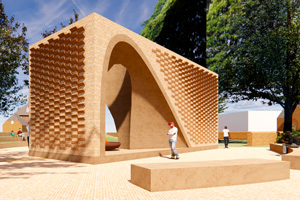Tuesday, Aug. 25, the College of William and Mary took to Facebook to announce that the Memorial to the African Americans Enslaved by William and Mary had met its fundraising goal of $2 million. A post which I read with pride and excitement was read differently by many alumni and Williamsburg community members. The majority of the comments supported the monument, but many comments worked with coded language to mock both the aesthetics and the purpose of the monument. The College has been trying to figure out the best way to honor its formerly enslaved peoples, as well as educate the community on the topic for a long time. This process has never been absent of controversy. We know it is impossible to honor enslaved people and educate people about them in a way that makes everyone feels comfortable. Still, the arguments made in these online comments stood in contrast to what we might expect. It was not about what way would be better to honor these individuals. Instead, the argument was about whether enslaved people even deserve a monument at all.
The College has approved a design to honor those enslaved by the university. The monument names all of the College’s known past slaves and purposely avoids including slave-owner names. This deliberate action grants these individuals their independence from those who held them in bondage. These names include those who worked the land to bring the College wealth, those who worked in the kitchens to nourish the students and faculty, those who worked as servants to ensure the students and faculty had shined shoes and clean clothes, and those who worked in a variety of other capacities. Such labor allowed students and faculty to focus on education and not farming and housework. It allowed them to study philosophy and language. Such contributions to the development of those students’ skills are directly related to what made it possible for Thomas Jefferson to write the “Declaration of Independence,” and later become the third president of the United States. The contributions of enslaved people are what has allowed for the creation of the “Alma Mater of a Nation.” Professors at the College educated five presidents, but the enslaved workers provided the labor necessary for the College to even function.
Undermining the contributions of those who were enslaved is a despicable act rooted in racism and classism. Many of the commenters believed that labor was not as valuable as ideas and capital. They pointed out that history typically honors only those who have had ideas and capital; therefore, enslaved people’s lack of these qualities disqualified them from being honored. It is important to remember that slaves did not have those things by force. They were denied humanity and denied wages. Such denial in itself makes them deserve recompense.
The College, a place of education that was intended to help people reach their full potential, denied enslaved people their potential.
The College, a place of education that was intended to help people reach their full potential, denied enslaved people their potential. The College did not allow a group of people to dream, to earn money or to participate in society. To put it quite simply, the College owned people and forced them against their will to do all the tasks that would allow their students to become the heroes that this country honors today.
This is why the construction of the monument is crucial. The Memorial to the Enslaved does not only honor the previously enslaved people. It also redefines what the College decides are important societal contributions. The notion that big ideas and capital are the only important contributions perpetuate problematic systems of classism, racism, and sexism It is what entitles students to feel they can throw trash on top of overflowing garbage cans. It is what allows students to call members of the Williamsburg community “townies.” It is what creates the never-ending othering of those who are not students or faculty. It is what created the institution of slavery and allowed for its persistence. Such thinking is outdated, and all members of our community should work to overcome this way of thinking. This change begins with the Memorial to the Enslaved. This is what it truly means to look to the past to find the future.
Email Shane Moran at smmoran01@email.wm.edu.

